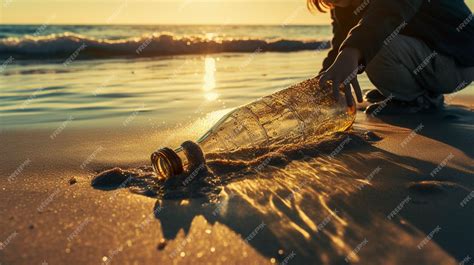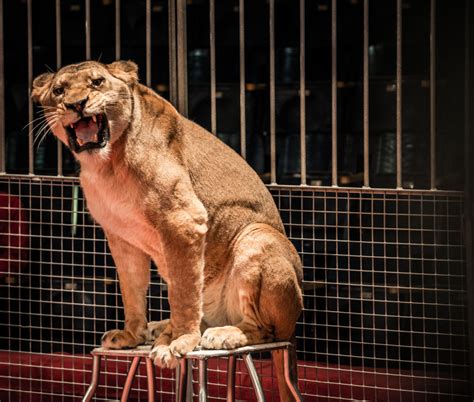
A message in a bottle launched from the coast of Scotland a decade ago has forged an unlikely connection between a young girl in Norway and the boy who originally cast it into the sea.
Ten years after a young Scottish boy named Zach McPherson sent a message in a bottle into the North Sea, the handwritten note traveled over 800 miles to land in the hands of Kajsa Eldøy, an 11-year-old girl from Sandsøya, Norway. The discovery has sparked a heartwarming international friendship and brought a sense of wonder to both families.
Kajsa found the bottle while playing on the beach with her family in early June. Intrigued, she opened it to find a neatly folded note inside. The message, dated June 12, 2014, was written by Zach McPherson, then around the age of 8, detailing his age, favorite colors, and hobbies. He requested that whoever found the message write back to him.
“When we found it, we were all very excited. It was so cool to read the letter and wonder who sent it,” Kajsa’s mother, Marion Eldøy, told reporters. Following the instructions, Kajsa and her family embarked on a mission to locate the sender. They posted about their discovery on social media, hoping someone would recognize the handwriting or the details in the message. The post quickly gained traction, and within days, it had reached Zach McPherson’s family in Scotland.
Zach, now 18, was amazed when he learned that his message had been found after all these years. “I was quite shocked,” he said. “I didn’t think it would go that far, or anyone would find it.” The bottle’s journey across the North Sea had seemed almost impossible, but the power of social media made the reunion a reality.
The families have since connected online, sharing stories and experiences. Kajsa and Zach are planning a virtual meeting to get to know each other better. “It’s a really nice story, and it’s lovely to see the kids connecting,” Marion Eldøy said. The unlikely connection has brought joy and a sense of adventure to both families, highlighting the power of simple acts and the interconnectedness of the world.
The story has resonated with people around the globe, reminding them of the magic of human connection and the enduring appeal of classic adventures. In an era dominated by digital communication, the message in a bottle serves as a nostalgic reminder of simpler times and the enduring power of hope and curiosity.
The tale of Zach and Kajsa illustrates the universal appeal of messages in bottles, which have been used for centuries as a means of communication, exploration, and even survival. Whether used by shipwrecked sailors, marine researchers, or simply curious children, these messages encapsulate a longing for connection and a belief in the possibility of reaching out across vast distances.
The History of Messages in Bottles
The concept of sending messages in bottles dates back centuries, with some of the earliest documented instances occurring in ancient Greece. The Greek philosopher Theophrastus, who lived in the 4th century BC, reportedly used bottles to study ocean currents. By throwing sealed bottles containing notes into the sea, he hoped to demonstrate that the Atlantic Ocean flowed into the Mediterranean Sea.
During the Age of Exploration, messages in bottles were often used by sailors to send news of discoveries or to request assistance in times of distress. These messages were crucial for maritime communication before the advent of modern technology. Shipwrecked sailors would often cast bottles into the sea with notes detailing their location and circumstances, hoping that someone would find the message and send help.
In the 19th and 20th centuries, scientists began using messages in bottles as a tool for oceanographic research. These messages were used to study ocean currents, migration patterns of marine life, and the dispersal of pollutants. Researchers would release large numbers of bottles with instructions for finders to report the location and date of discovery. This data helped scientists to better understand the complex dynamics of the world’s oceans.
One of the longest-running scientific experiments involving messages in bottles was conducted by the Marine Biological Association in Plymouth, England. From 1904 to 1914, researchers released thousands of bottles into the North Sea to study the movement of water masses. The experiment continued for over a century, with the last of the bottles being recovered in 2015. The data collected from these bottles provided valuable insights into ocean currents and the effects of climate change.
The Science of Ocean Currents
Ocean currents play a critical role in distributing heat, nutrients, and pollutants around the globe. They are driven by a combination of factors, including wind, temperature differences, salinity variations, and the Earth’s rotation. Surface currents, such as the Gulf Stream and the North Atlantic Current, are primarily driven by wind and are responsible for transporting warm water from the equator towards the poles.
Deep ocean currents, on the other hand, are driven by differences in density. Cold, salty water is denser than warm, fresh water, so it tends to sink to the bottom of the ocean. This process, known as thermohaline circulation, drives a global conveyor belt of water that circulates throughout the world’s oceans.
The journey of Zach McPherson’s message in a bottle highlights the complex interplay of these ocean currents. The bottle was likely carried southward along the coast of Scotland before being caught up in the North Atlantic Current, which flows eastward towards Norway. The exact path of the bottle would have been influenced by a variety of factors, including wind, tides, and local eddies.
The fact that the bottle traveled over 800 miles in ten years demonstrates the slow but persistent nature of ocean currents. While the bottle may have drifted relatively slowly on average, it likely experienced periods of rapid movement and periods of stagnation. The journey of the bottle also highlights the importance of understanding ocean currents for a variety of applications, including navigation, pollution control, and climate modeling.
The Impact of Social Media
The discovery of Zach McPherson’s message in a bottle would likely have remained a local curiosity if not for the power of social media. Kajsa Eldøy’s family’s decision to post about their discovery on social media platforms allowed the message to reach a global audience. Within days, the post had been shared thousands of times, eventually reaching Zach McPherson’s family in Scotland.
Social media has revolutionized the way we communicate and connect with each other. It has made it easier than ever to share information, ideas, and experiences with people all over the world. In the case of Zach and Kajsa, social media played a crucial role in bridging the gap between two families separated by distance and time.
The story of Zach and Kajsa is just one example of how social media can be used to create positive connections and bring people together. Social media can also be used to raise awareness about important issues, mobilize support for social causes, and facilitate collaboration among individuals and organizations.
However, it is important to recognize that social media also has its drawbacks. Social media can be used to spread misinformation, promote hate speech, and create echo chambers where people are only exposed to information that confirms their existing beliefs. It is important to use social media responsibly and to be critical of the information we encounter online.
The Enduring Appeal of Messages in Bottles
Despite the advent of modern technology, messages in bottles continue to hold a special place in our collective imagination. They represent a sense of adventure, mystery, and the possibility of connecting with someone unknown. The story of Zach and Kajsa illustrates the enduring appeal of these simple acts of communication.
Messages in bottles are often seen as a romantic and nostalgic form of communication. They evoke images of sailors lost at sea, explorers charting unknown territories, and lovers separated by distance. They represent a belief in the power of hope and the possibility of reaching out across vast distances.
In an era dominated by digital communication, messages in bottles offer a tangible and personal alternative. They are a reminder that communication is not just about exchanging information, but also about building relationships and sharing experiences. The act of writing a message, sealing it in a bottle, and casting it into the sea is a symbolic gesture of hope and connection.
The story of Zach and Kajsa is a reminder that even in the digital age, there is still room for magic and wonder in the world. It is a story that has resonated with people all over the globe, reminding them of the power of human connection and the enduring appeal of classic adventures. The message in a bottle has not only connected two families, but it has also captured the hearts of people around the world, reminding them of the simple joys of life and the importance of hope and curiosity.
The Environmental Impact of Messages in Bottles
While the story of Zach and Kajsa is heartwarming, it also raises important questions about the environmental impact of messages in bottles. Plastic bottles are a major source of pollution in the world’s oceans. They can take hundreds of years to decompose and can cause serious harm to marine life.
Plastic bottles can entangle marine animals, causing them to drown or starve. They can also break down into smaller pieces, known as microplastics, which can be ingested by marine animals and can accumulate in the food chain. Microplastics have been found in a wide variety of marine organisms, including fish, shellfish, and seabirds.
The environmental impact of messages in bottles can be reduced by using biodegradable materials. Glass bottles are a more environmentally friendly alternative to plastic bottles, as they are made from natural materials and can be recycled. Messages can also be written on biodegradable paper using non-toxic ink.
It is also important to dispose of messages in bottles responsibly. If you find a message in a bottle, do not simply throw the bottle back into the sea. Instead, recycle the bottle or dispose of it properly. By taking these simple steps, we can reduce the environmental impact of messages in bottles and protect our oceans for future generations.
The story of Zach and Kajsa serves as a reminder of the interconnectedness of our world and the importance of protecting our environment. It is a story that has inspired people to reconnect with nature and to think more carefully about the impact of their actions on the planet.
Expanding the Narrative:
The story of Zach and Kajsa is more than just a heartwarming tale of a message in a bottle finding its way across the North Sea. It speaks to several broader themes that resonate deeply in today’s world.
-
The Power of Hope and Chance: In an era often dominated by cynicism and instant gratification, the story provides a refreshing reminder that hope and chance still play a significant role in our lives. The odds of a bottle surviving the harsh conditions of the North Sea for a decade, then being discovered and traced back to its sender, are incredibly slim. Yet, it happened, illustrating that unexpected and positive connections can still emerge.
-
Intergenerational Connection: The story connects two generations in a unique way. Zach, as a child, sent a message into the world, hoping for a response. Kajsa, a decade later, answered that call. This intergenerational connection highlights the enduring power of simple acts of communication and the ability of younger and older individuals to find common ground.
-
The Allure of Adventure and Discovery: Messages in bottles are inherently linked to the spirit of adventure and discovery. They represent a desire to explore the unknown and connect with distant lands. The story taps into this primal human instinct, reminding us of the allure of the sea and the potential for exciting discoveries.
-
The Contrast Between Traditional and Modern Communication: In a world saturated with digital communication, the story offers a nostalgic contrast. A handwritten note, sealed in a bottle and carried by the currents of the sea, stands in stark contrast to the instantaneous nature of emails, texts, and social media. It underscores the value of tangible, physical communication and the unique charm of slower, more deliberate forms of connection.
-
The Role of Global Citizenship: The story highlights the interconnectedness of the world and the potential for cross-cultural understanding. Zach, a Scottish boy, and Kajsa, a Norwegian girl, are brought together by a chance encounter, demonstrating that friendship and connection can transcend national borders and cultural differences. This underscores the importance of fostering global citizenship and promoting understanding between different cultures.
-
The Importance of Environmental Awareness: While the story is heartwarming, it also offers an opportunity to reflect on the environmental impact of our actions. The use of a plastic bottle raises questions about plastic pollution and the need for sustainable practices. It serves as a reminder that even seemingly harmless acts can have environmental consequences.
Further Exploration:
- Research the history of other famous messages in bottles and their impact.
- Investigate the science of ocean currents and their role in global climate patterns.
- Explore the cultural significance of the sea in different societies.
- Consider the environmental impact of plastic pollution and ways to reduce it.
- Reflect on the role of chance and serendipity in our lives.
By delving deeper into these themes, we can gain a more comprehensive understanding of the story of Zach and Kajsa and its broader implications. The story is not just a feel-good tale; it is a reflection of our shared humanity, our connection to the natural world, and our potential for creating positive change.
The journey of the message in a bottle is a testament to the power of hope, the enduring allure of adventure, and the interconnectedness of our world. It reminds us that even in the digital age, there is still room for magic and wonder in our lives. Frequently Asked Questions (FAQ):
Q1: How did Kajsa Eldøy find the message in a bottle?
A1: Kajsa Eldøy, an 11-year-old girl, discovered the message in a bottle while playing on the beach with her family on Sandsøya, an island in Norway. The bottle washed ashore, and she found it while exploring the shoreline.
Q2: What did the message in the bottle say?
A2: The message was written by Zach McPherson on June 12, 2014. It included details such as his age (around 8 years old), his favorite colors, and his hobbies. Zach also requested that whoever found the message write back to him.
Q3: How did Zach McPherson’s family find out about the message being discovered?
A3: Kajsa’s family posted about their discovery on social media, hoping someone would recognize the handwriting or the details in the message. The post gained traction and was widely shared, eventually reaching Zach McPherson’s family in Scotland.
Q4: How far did the message in the bottle travel?
A4: The message in the bottle traveled over 800 miles (approximately 1,287 kilometers) from the coast of Scotland to Sandsøya, Norway, across the North Sea.
Q5: What is the current status of the connection between Kajsa and Zach?
A5: Kajsa and Zach have connected online with their families. They are planning a virtual meeting to get to know each other better. The discovery has sparked a new international friendship, bringing joy and a sense of adventure to both families.









